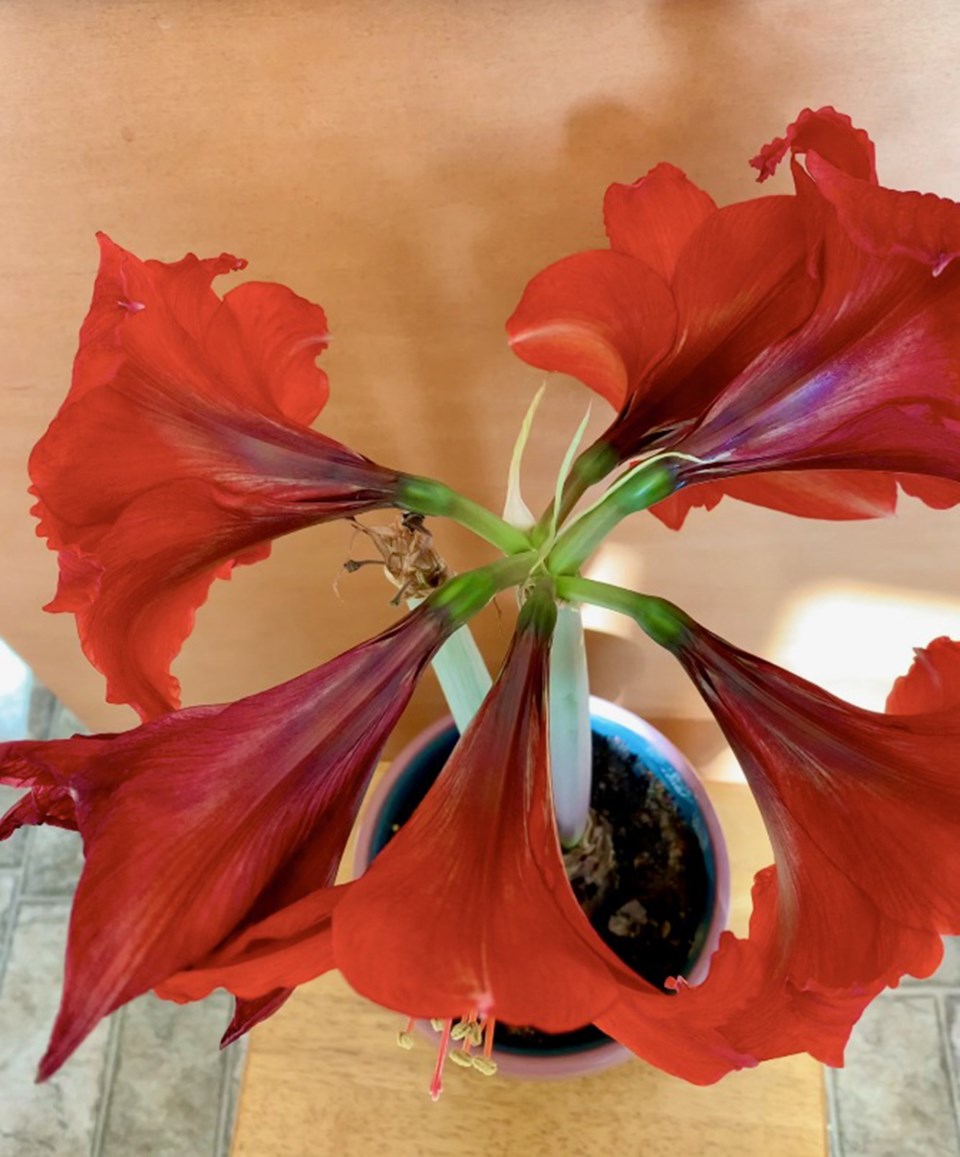YORKTON - We seem to place amaryllis plants in the category of “Christmas flowers”, don’t we.
If we planted an amaryllis bulb around this the last week in November, chances are that it would be blooming in about four to six weeks, taking us to the Christmas season.
When we buy a bulb, it’s really a “bloom in a box”. Just plant it up, add water, and wait patiently.
Amaryllis grows quickly, relatively speaking, and by six weeks we should usually have a stunning, trumpet-shaped flower gracing our kitchen tables!
First, a little background. Amaryllis plants originally called Africa home, but many now come to us from South America. What a beautiful plant, with blooms in many colours from the cheery red or red and white, to pink, coral, or even burgundy. Blooms can get as large as ten inches across, and since stems have several blooms on them, the amaryllis makes a real holiday show!
When we open our amaryllis box, there will be the container and soil, all ready for us. We shouldn’t bury the bulb completely: the top quarter should be above ground. I read that after we give the newly planted bulb a drink of water, we shouldn’t water it again until we see the first hint of the green shoot sprouting. Not too much water; amaryllis don’t like wet feet.
Once the shoot begins to come up from the top of the bulb, the plant progresses quickly after that. An ideal location is a brightly lit spot. When the plant starts growing, and indeed it seems that we can almost see a difference from day to day, we should watch out that it doesn’t start leaning towards the light. (Okay, class, what is this condition called? When a plant leans towards the light, it is called phototropism, and to avoid a lop-sided plant, we should be diligent about turning the container so the plant will remain straight.)
In a short time, the blooms will emerge; what a delight! When the blooms fade, cut them off at the base of the stem, but leave the leaves on the plant to help replenish the bulb. (Another pop-quiz: why do we remove the spent flowers? Because if we don’t, the plant will think that we expect it to make seeds, and it will put all its energy into this task, rather than building up strength in the bulb so that it can bloom again.) We should leave the container in a sunny spot, and when spring comes again and we don’t have to worry about frost, we can put the container outside. We don’t have to transplant it, because amaryllis are like geraniums: they like to live in a small space.
The amaryllis can stay outdoors, enjoying the outdoor air and light, until early July, when we should bring it indoors again and put it in a dark spot in the basement. At this time, we stop watering it and let it have a rest. Fast forward now to the middle or end of October: trim off the old leaves, bring the container back upstairs again to a nice sunny spot, and give it a bit of water. Then we wait, and hopefully the blooming process will begin again.
I have heard of amaryllis plants that survive and bloom for decades. I have also heard of amaryllis plants that limp through one blooming season and that seems to be it; after that, they may have a few feeble and floppy leaves, but no more blooms. One theory is that the bulb is not strong enough to bloom again, which might prompt a determined gardener to focus on making the bulb strong with a bit of fertilizer and a lot of will-power! Or it may prompt some to give up and try again with a brand-new bulb. Whichever gardening approach is yours, they are truly lovely plants and worth the effort of at least one blooming period!
Thank you to our friends at YTW for their great work each week. Visit the Yorkton hort society at www.yorktonhort.ca and have a great week!






